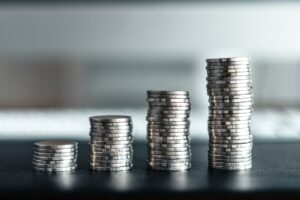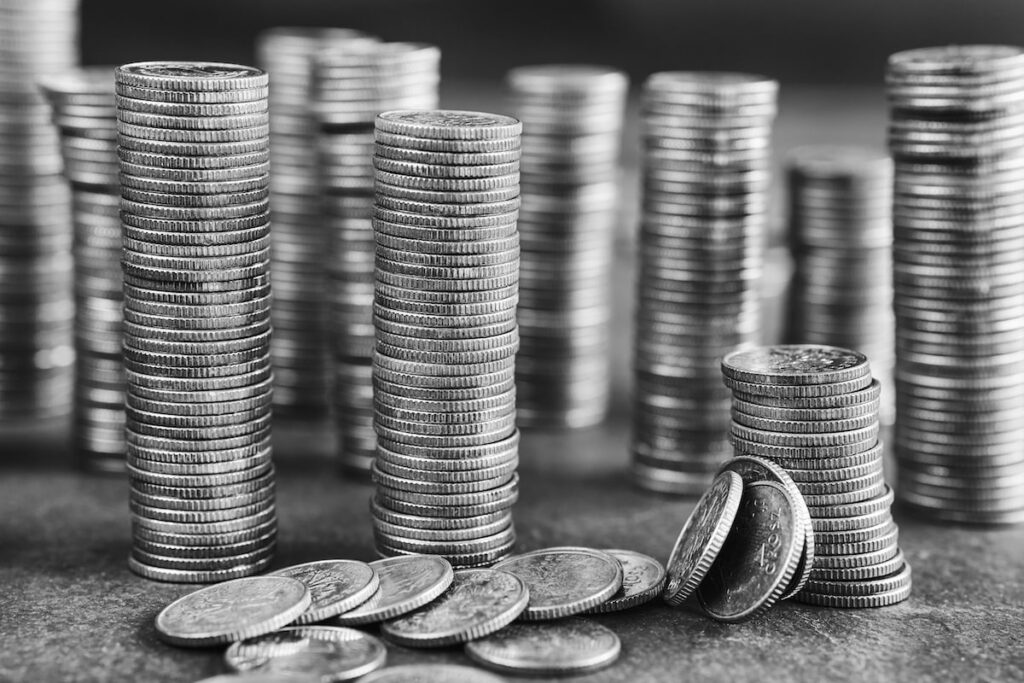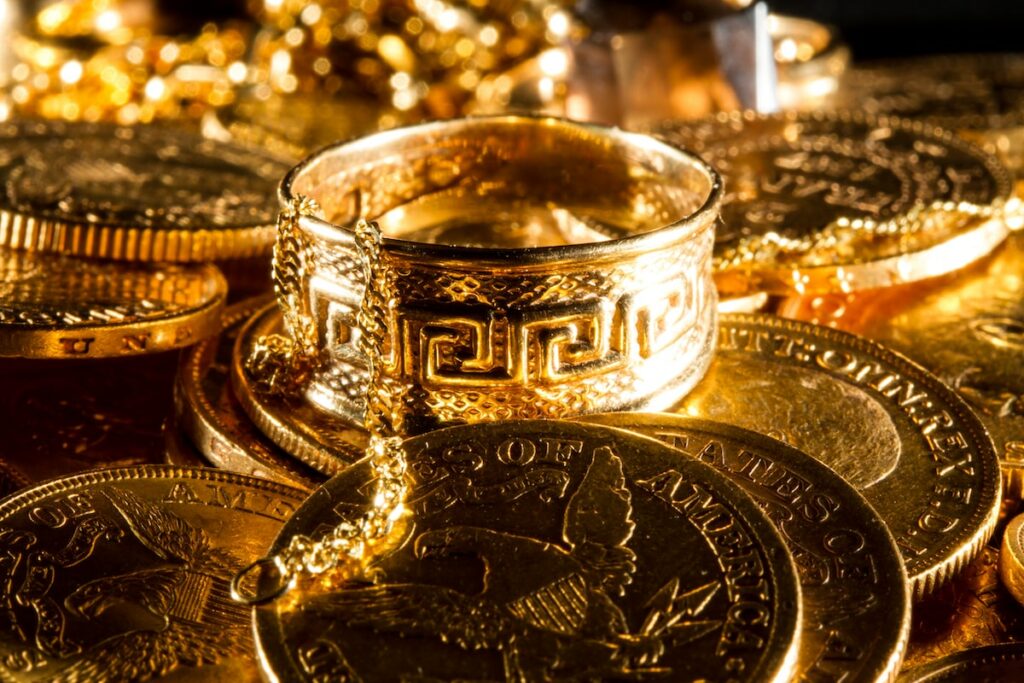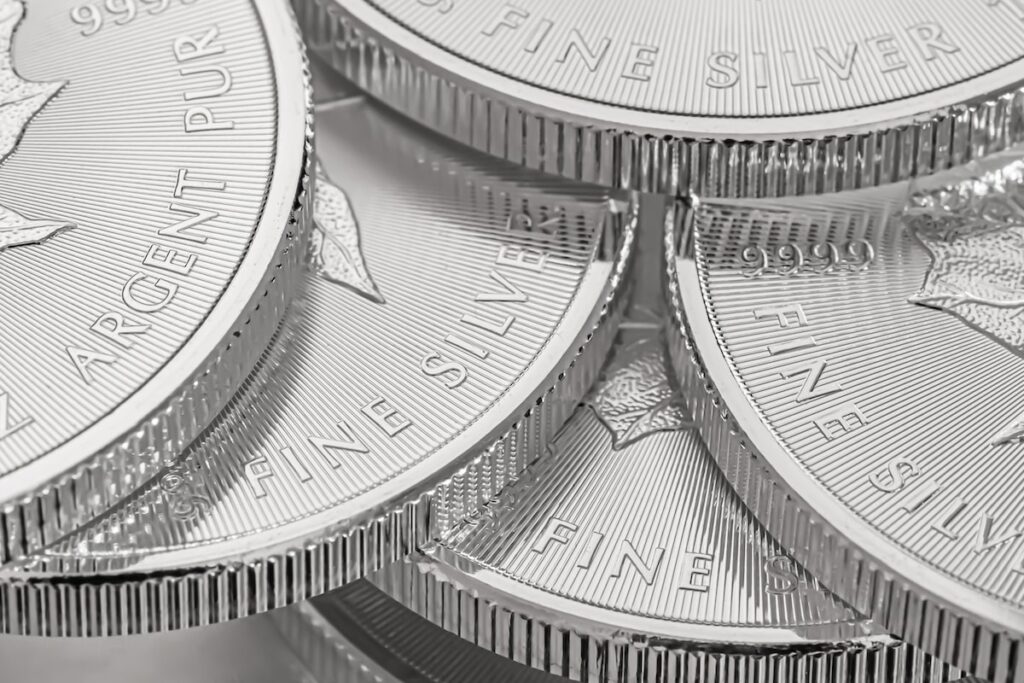In the complex landscape of financial markets, there is an ongoing debate surrounding the relationship between silver and inflation.
As economies experience fluctuations in purchasing power and prices soar, investors and analysts, grapple with whether silver, often considered a valuable and tangible asset, acts as a reliable hedge against inflationary pressures.
Understanding the dynamics between these two forces requires a comprehensive exploration of historical patterns, market behaviors, and the intricate interplay of economic factors.
The relationship between silver and inflation is complex and can vary. While silver is often seen as a suitable hedge against inflation, its price movement is influenced by multiple factors, including supply and demand dynamics, market sentiment, and investor preferences.
In this article, we delve into the intriguing correlation between silver and inflation, shedding light on the factors that influence this relationship and examining the diverse perspectives surrounding this intriguing topic.
Understanding the Inflation-Silver Link: Unraveling the Connection
The connection between inflation and silver is a topic of considerable interest and debate among investors and economists.
Silver is often considered a traditional hedge against inflation, as its value is expected to rise during rising prices and eroding purchasing power.
This perception stems from silver’s historical role as a store of value and medium of exchange.
Silver has been used as currency for centuries, and its scarcity and durability have contributed to its enduring appeal.
However, the relationship between silver and inflation is not as straightforward as it may seem.
Various factors come into play that can influence silver prices independently of inflationary pressures.
Supply and demand dynamics, investor sentiment, geopolitical factors, and industrial demand contribute to the intricate influences on silver’s performance.
A comprehensive analysis is needed to unravel the connection between inflation and silver.
Examining historical trends, understanding the underlying market dynamics, and exploring expert opinions can provide valuable insights into the relationship between silver and inflation.
By delving deeper into these aspects, investors can make more informed decisions about including silver in their portfolios as a potential hedge against inflation.
Factors Influencing Silver Prices: Beyond Inflationary Pressures
Considering a wide range of factors beyond inflationary pressures regarding silver prices is important.
While inflation certainly plays a role, several other key influencers shape the dynamics of the silver market.
- Industrial Demand: Silver has extensive industrial applications, including electronics, solar panels, and medical devices. Industrial demand fluctuations, driven by technological advancements and global economic conditions, can significantly impact silver prices.
- Investor Sentiment: Market sentiment and investor behavior can substantially impact silver prices. When investors perceive silver as a haven or an attractive investment option, demand tends to increase, driving up prices. Conversely, negative sentiment or shifts in investment preferences can lead to price declines.
- U.S. Dollar Strength: As a globally traded commodity, silver prices are influenced by the strength or weakness of the U.S. dollar. Generally, a weaker dollar boosts silver prices, making the metal relatively cheaper for international buyers.
- Supply and Mining Output: Like any other commodity, silver prices are influenced by supply and demand dynamics. Changes in silver mining output, disruptions in production, or shifts in mining regulations can impact the availability of silver in the market and consequently affect its prices.
- Market Speculation and Financial Instruments: The presence of financial instruments tied to silver, such as exchange-traded funds (ETFs) and futures contracts, can introduce speculative elements that influence silver prices. Trading activity, speculation, and the overall liquidity in these markets can create short-term volatility in silver prices.
By considering these factors, investors can gain a more comprehensive understanding of the forces at play in the silver market.
This broader perspective allows for a more informed analysis of silver’s price movements beyond the simple correlation with inflationary pressures.
Silver as an Inflation Hedge: Examining the Validity of the Perception
Silver has long been perceived as a potential hedge against inflation, but the validity of this perception warrants a closer examination.
While the historical relationship between silver and inflation suggests a positive correlation, it is important to consider the nuances and limitations of silver’s effectiveness as an inflation hedge.
One aspect to consider is the timing of silver price movements to inflation.
While silver prices may rise during periods of heightened inflation, they may not always keep pace with the full extent of inflationary pressures.
Factors such as market dynamics, investor sentiment, and industrial demand can influence silver prices independently of inflation, leading to divergences.
Additionally, the performance of silver as an inflation hedge can vary across different inflationary environments.
Silver may demonstrate a more consistent relationship as a store of value in moderate inflationary periods.
However, during periods of hyperinflation or deflation, other assets or strategies may offer more effective protection against inflationary erosion.
Furthermore, it is essential to acknowledge that silver’s value is subject to multiple influences beyond inflation.
Factors such as global economic conditions, geopolitical events, and market speculation can significantly impact silver prices, sometimes overshadowing the direct effects of inflation.
To assess the validity of silver as an inflation hedge, it is crucial to evaluate its role within a diversified portfolio.
Understanding silver’s unique characteristics and risks and considering other potential inflation-resistant assets can provide a more comprehensive approach to hedging against inflationary pressures.
In conclusion, while silver has traditionally been viewed as an inflation hedge, its effectiveness in this role should be examined critically.
By considering the intricacies of silver’s price movements, its performance across different inflationary environments, and its role within a diversified portfolio, investors can make more informed decisions regarding the validity of silver as an inflation hedge.
Supply and Demand Dynamics: Unpacking the Impact on Silver during Inflationary Periods
During inflationary periods, the interplay between supply and demand dynamics plays a crucial role in shaping the impact on silver prices.
Understanding these dynamics is essential for comprehending how silver performs in the face of rising prices.
On the supply side, silver mining output and recycling are significant factors.
Changes in mining production levels, advancements in mining technology, and shifts in mining regulations can influence the availability of silver in the market.
If mining output fails to keep pace with growing demand, it can exert upward pressure on silver prices.
Recycling also contributes to the overall supply of silver.
The availability of scrap silver, which includes recycled jewelry, electronic components, and industrial waste, can fluctuate depending on economic conditions and market incentives.
Increased recycling activity during inflationary periods can help augment the supply of silver, mitigating upward price pressure to some extent.
On the demand side, several factors contribute to the overall appetite for silver. Industrial demand plays a significant role as silver is widely used in various industries, including electronics, photovoltaics, and medical devices.
Economic growth, technological advancements, and shifts in consumer behavior can influence industrial demand for silver.
During inflationary periods, industrial demand may remain relatively stable, as industries require silver for manufacturing.
Investment demand is another crucial aspect. Investors often turn to precious metals like silver as a potential store of value during inflationary periods.
The perception of silver as an inflation hedge can drive increased demand from individuals and institutional investors seeking to protect their assets.
This investment demand can contribute to upward price movements in the silver market.
The complex interplay between supply and demand dynamics during inflationary periods shapes the overall impact on silver prices.
Fluctuations in mining output, recycling activity, industrial demand, and investment demand all contribute to the price volatility observed in the silver market.
By closely monitoring and analyzing these dynamics, investors can gain insights into how silver will likely perform during inflationary periods and make informed decisions regarding their investment strategies.
Practical Considerations: Incorporating Silver into an Inflation-Resistant Portfolio
Incorporating silver into an inflation-resistant portfolio requires careful consideration of various practical factors.
While silver is often seen as a potential hedge against inflation, it is essential to approach its inclusion in a portfolio with a well-thought-out strategy.
Here are some practical considerations to keep in mind:
- Portfolio Diversification: Silver should be viewed as one component of a diversified portfolio rather than the sole solution to inflation protection. Diversification across different asset classes, such as stocks, bonds, real estate, and commodities, can help mitigate risks and enhance overall portfolio resilience.
- Risk Tolerance and Investment Horizon: Assess your risk tolerance and investment horizon before allocating a portion of your portfolio to silver. Like any investment, silver prices can be subject to volatility. Consider your ability to withstand short-term price fluctuations and the length of time you intend to hold your investments.
- Understanding Silver’s Role: Clarify your objectives for including silver in your portfolio. Determine whether your goal is to achieve capital appreciation, wealth preservation, or inflation protection. Understanding your investment objectives will help guide your allocation decisions and expectations regarding silver’s performance.
- Physical Silver vs. Paper-Based Investments: Decide whether you prefer to own physical silver, such as bars or coins, or if you are comfortable investing in paper-based silver products like exchange-traded funds (ETFs) or silver futures. Each option has its advantages and considerations, including storage and liquidity.
- Costs and Fees: Evaluate the costs associated with investing in silver. Consider factors such as premiums on physical silver, transaction costs, management fees for ETFs, or expenses related to storage and insurance if you choose physical ownership.
- Market Research and Monitoring: Stay informed about market trends, supply and demand dynamics, and economic indicators that impact silver prices. Regularly monitor the performance of silver investments and reassess their role in your portfolio.
- Seeking Professional Advice: If you are uncertain or lack expertise in managing a silver investment strategy, consider seeking advice from a financial advisor or investment professional. They can provide guidance based on your circumstances and help tailor a portfolio strategy that aligns with your goals.
Incorporating silver into an inflation-resistant portfolio requires a thoughtful approach.
By considering these practical factors and aligning your investment strategy with your risk tolerance and objectives, you can better position yourself to navigate the potential impact of inflation on your portfolio’s value.




